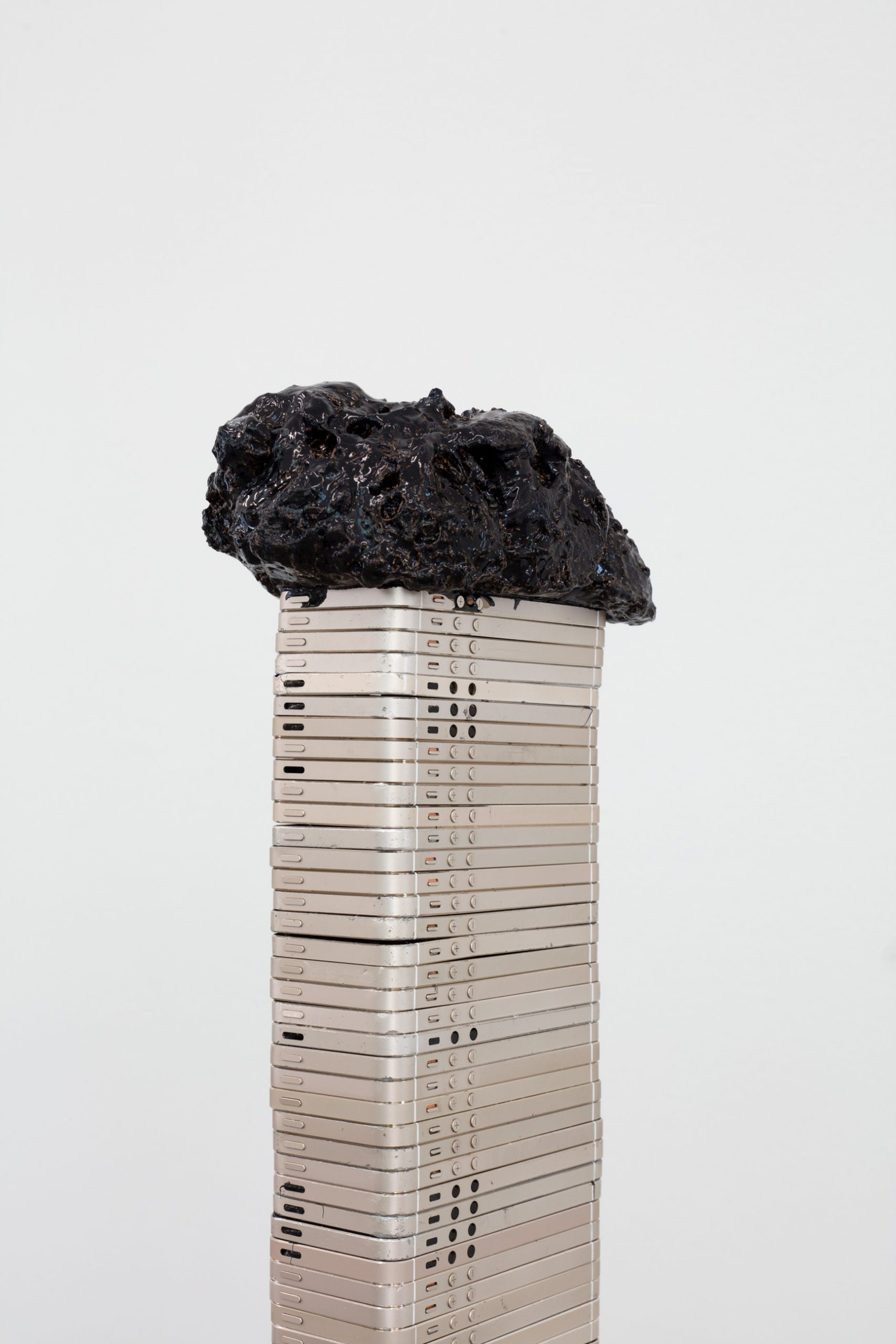

Collecteurs has created an online exhibition experience for “Black Gooey Universe,” with additional timelines for storytelling and an interview with American Artist on their project. In keeping with Collecteurs’ mission to give the public access to the world’s unseen artworks, we are happy to provide a platform to dive deeper into the exhibition which is now on view in Mexico City.
Labor presents American Artist’s first exhibition in Mexico, “Black Gooey Universe” which redefines how we think about race in the digital age by exploring the history of computer technology. Beginning with their name -which is not a name, but rather a declaration of intentions: to subvert the stereotypes of the generic American artist from blackness, and to question what it means to be an Artist. An American Artist.
American Artist’s practice arises from multiple contexts: the sociopoetics of Black radicalism, where mass revolutionary movements are fused with philosophical improvisations, as seen in the work of Black conceptual artists such as David Hammons; and the use of software as criticism, by questioning the biases embedded in computer technology, following scholars Simone Browne and Ruha Benjamin. The emergence of Artist’ critical artistic practice has coincided with the rise of the Black Lives Matter movement, which has made it impossible to ignore racially-motivated police abuse. A struggle that finds common ground and dialogue with the efforts for liberty held throughout Latin America.
artwork: American Artist / Untitled (Too Thick) Gold, 2021. Aluminum phone casings, silicone, polyurethane, asphalt, wood, lightning to USB cord. 152.4 x 17.8 x 10.2 cm (60 x 7 x 4inches). Photography by: Ramiro Chaves. Courtesy of American Artist and Labor.
For this exhibition, Artist continues their research into the development of the Graphical User Interface (GUI), which is what we use to communicate with a computer, and which is also how we come across most information these days. The most compelling part being that, before the 70s, computer screens were black, but now, when you open a new document or begin a search online, the background is typically white. It wasn’t always like that. In the CRT monitors, crucial to computers before the 90s, the screens appeared black, and white or green forms were inscribed by cathode rays. The early white gooey of the Apple Lisa was an artificial backdrop for corporate productivity, an entire plane of rapidly blinking white within the black CRT monitor space, sustained by a continuous energy draw, representative of the wasteful impetus of capitalism.
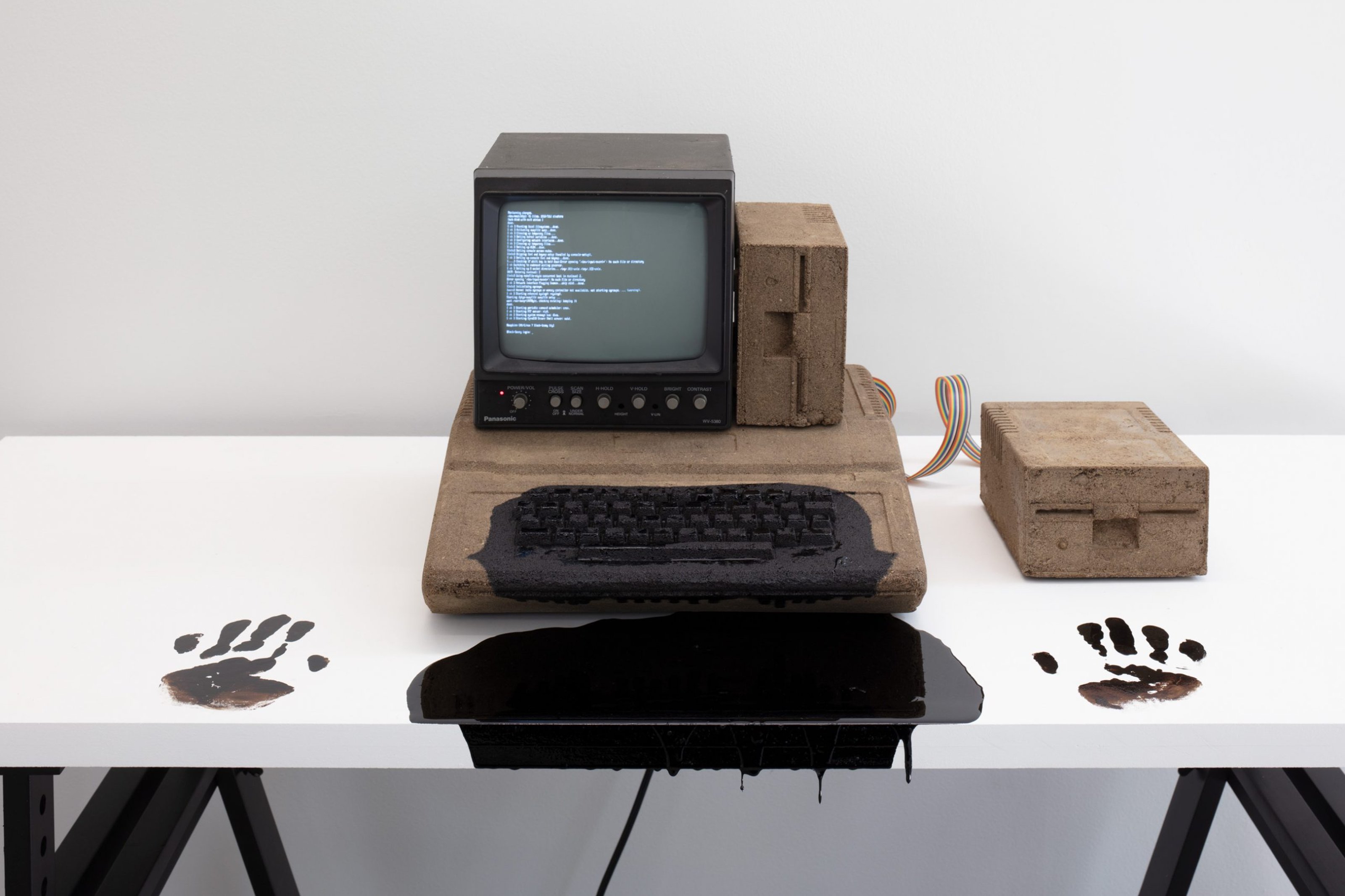
artwork: American Artist / Mother of All Demos II, 2021. Dirt, monochome CRT monitor, computer parts, Linux operating system, subwoofer cable, wood, asphalt. 149.9 x 74.9 x 127 cm. Photography by: Ramiro Chaves. Courtesy of American Artist and Labor.
Through their practice, American Artist proposes to ponder on the ideological assertion of whiteness as neutral. Their work rejects the finish-fetish aesthetic that commonly accompanies digital technology in the age of Web 2.0. American Artist further contextualizes the black screen as a metaphor for Blackness in their essay “Black Gooey Universe” published in unbag magazine.
They mention that “black gooey is antithetical to the values of the white screen”; they relate this inquiry to Fred Moten’s theories about race. Anti-blackness, Artist suggests, exists equally in the iPhones we use daily and the sets of politics we use to guide our lives.
What if that transition from the black screen to the white screen had never happened? Or what would it have meant for the original black interface to continue to evolve? And how does this challenge the values we are constantly negotiating within computer technology? This is what American Artist’s video and sculpture pieces are trying to represent: the redefinition of values that are in contrast with everything we associate with our current digital environment.
Visit ‘Black Gooey Universe’ Exhibition at Labor on Collecteurs


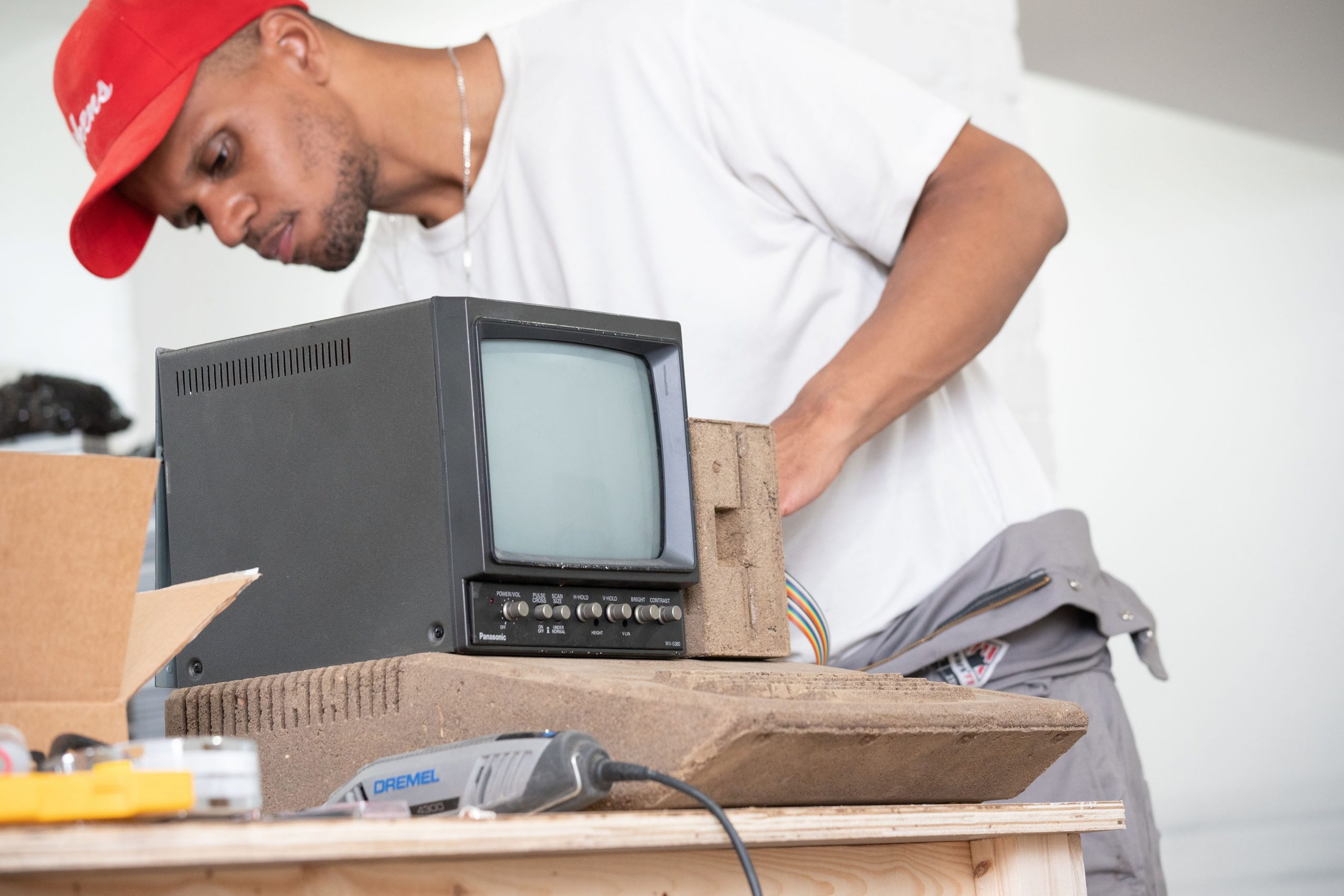
In our interview for the exhibition Black Gooey Universe at Labor; Collecteurs talks to American Artist about the advancement of the GUI and what a Black Gooey Universe would entail.


artwork: American Artist / Master-Slave Flip-Flop, 2021. Neon. 73 x 201 x 6cm. (28.74 x 79.13 x 2.36inches). Photography by: Ramiro Chaves. Courtesy of American Artist and Labor.


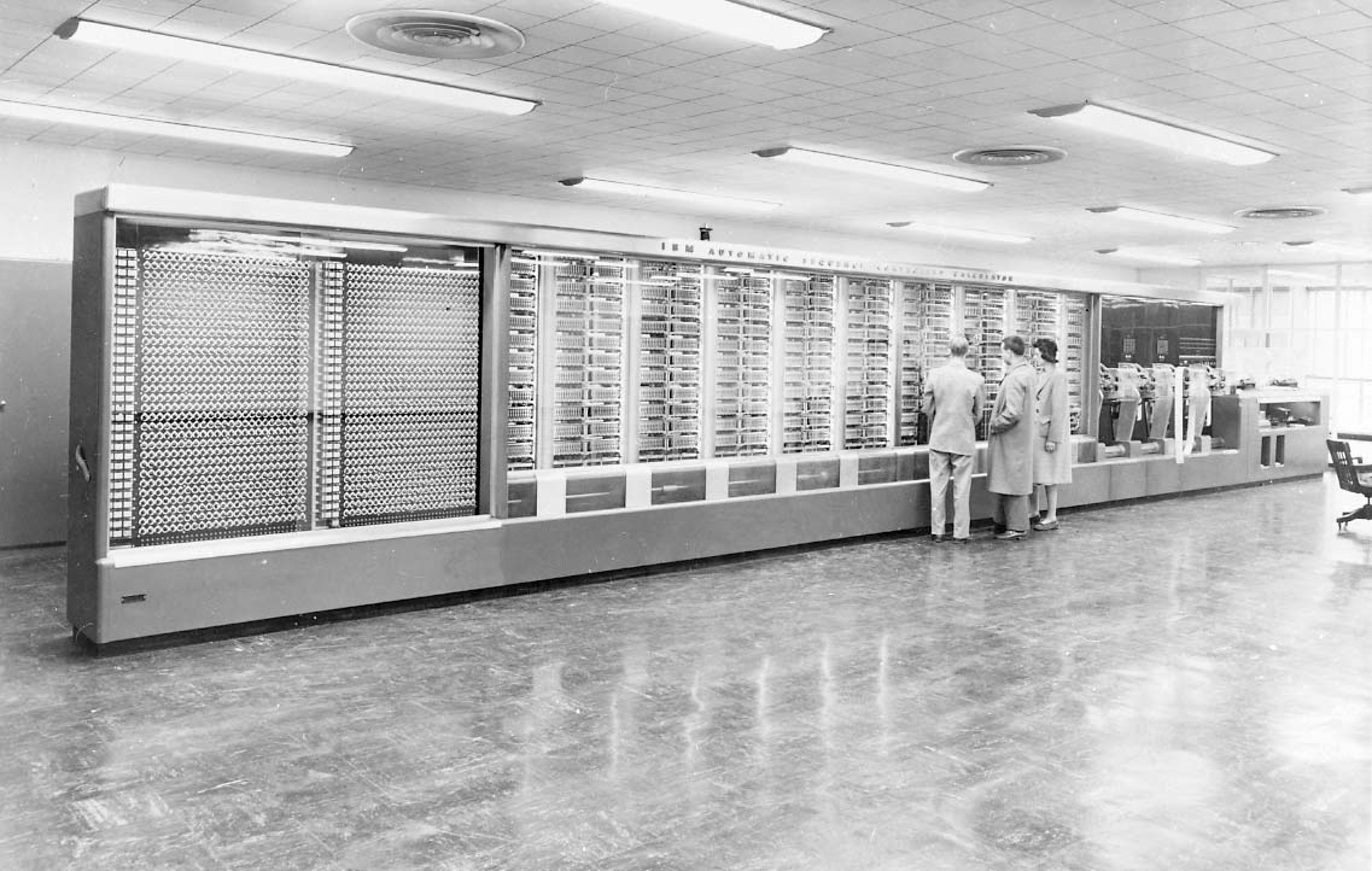
image: Harvard Mark I, 1943. image credits: Encyclopædia Britannica. (n.d.). Harvard Mark I, 1943 [Image]. https://www.britannica.com/technology/Harvard-Mark-I
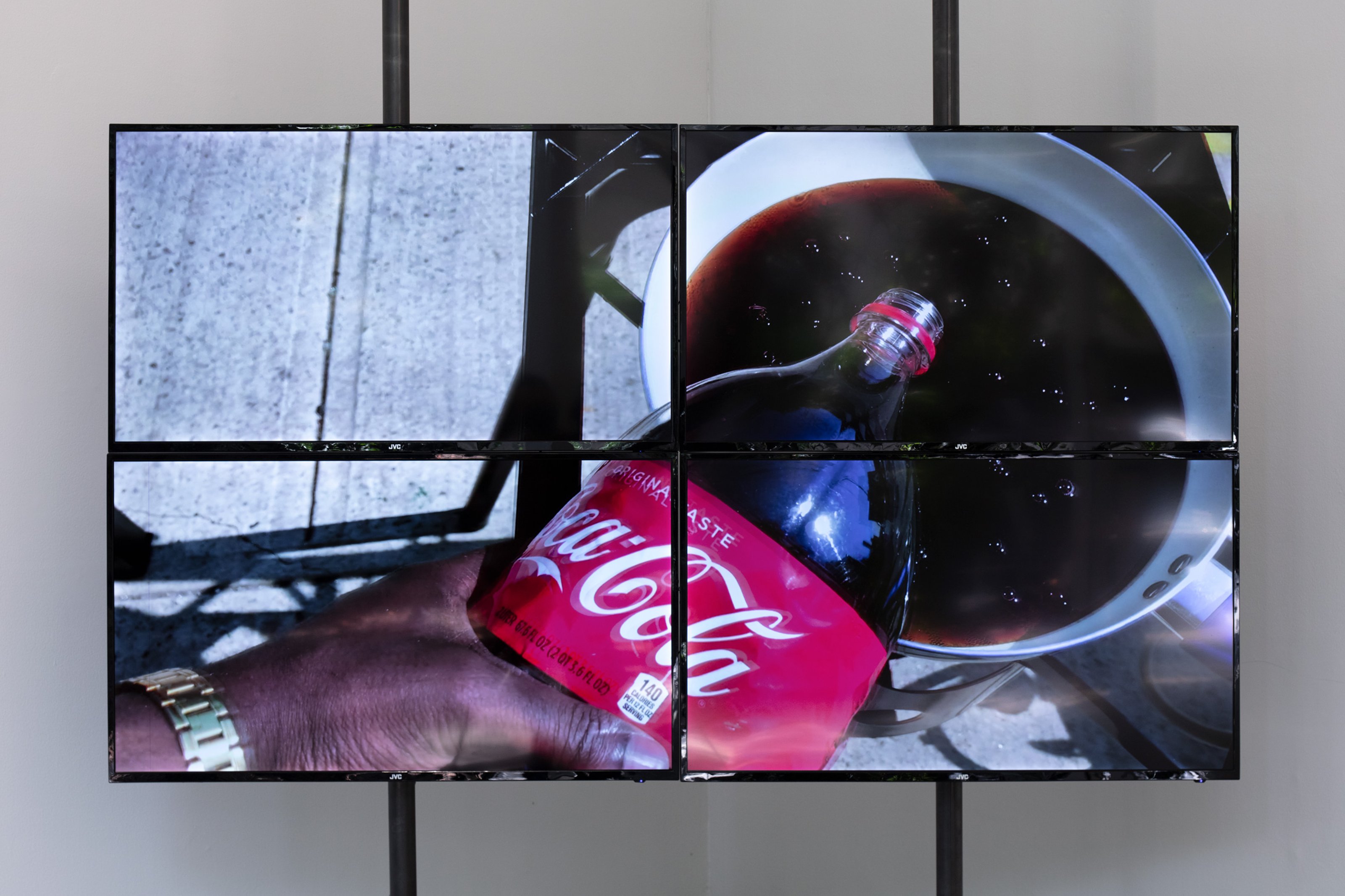
artwork: American Artist / Don’t Boil Your iPhone in Coca-Cola!, 2018. Single-channel HD video. 5:27 min. Photography by: Ramiro Chaves. Courtesy of American Artist and Labor.
“Such machines will have enormous appetites…There will always be plenty of things to compute in the detailed affairs of millions of people doing complicated things.”
-Vannevar Bush, As We May Think, 1945.
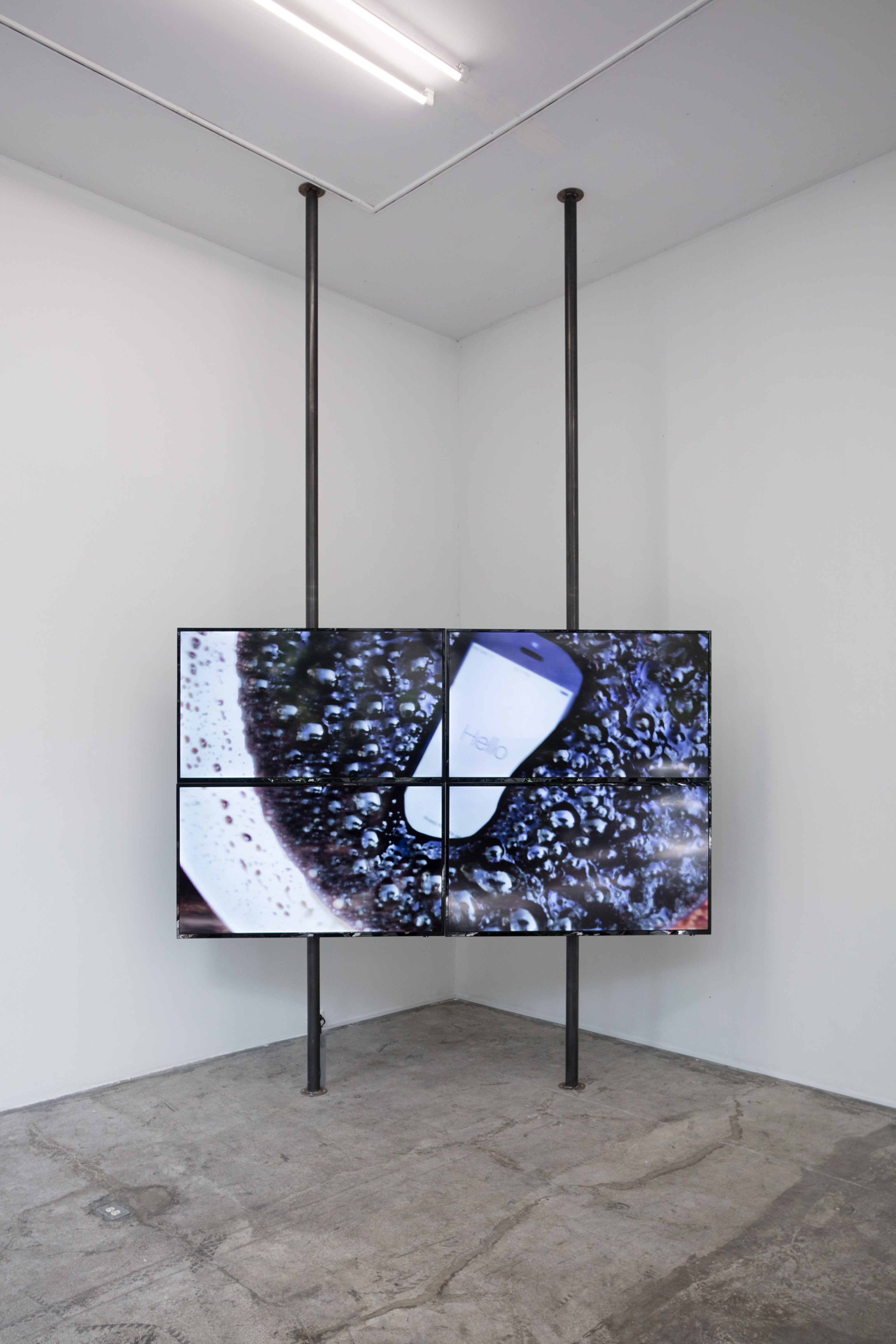
artwork: American Artist / Don’t Boil Your iPhone in Coca-Cola!, 2018. Single-channel HD video. 5:27 min. Photography by: Ramiro Chaves. Courtesy of American Artist and Labor.
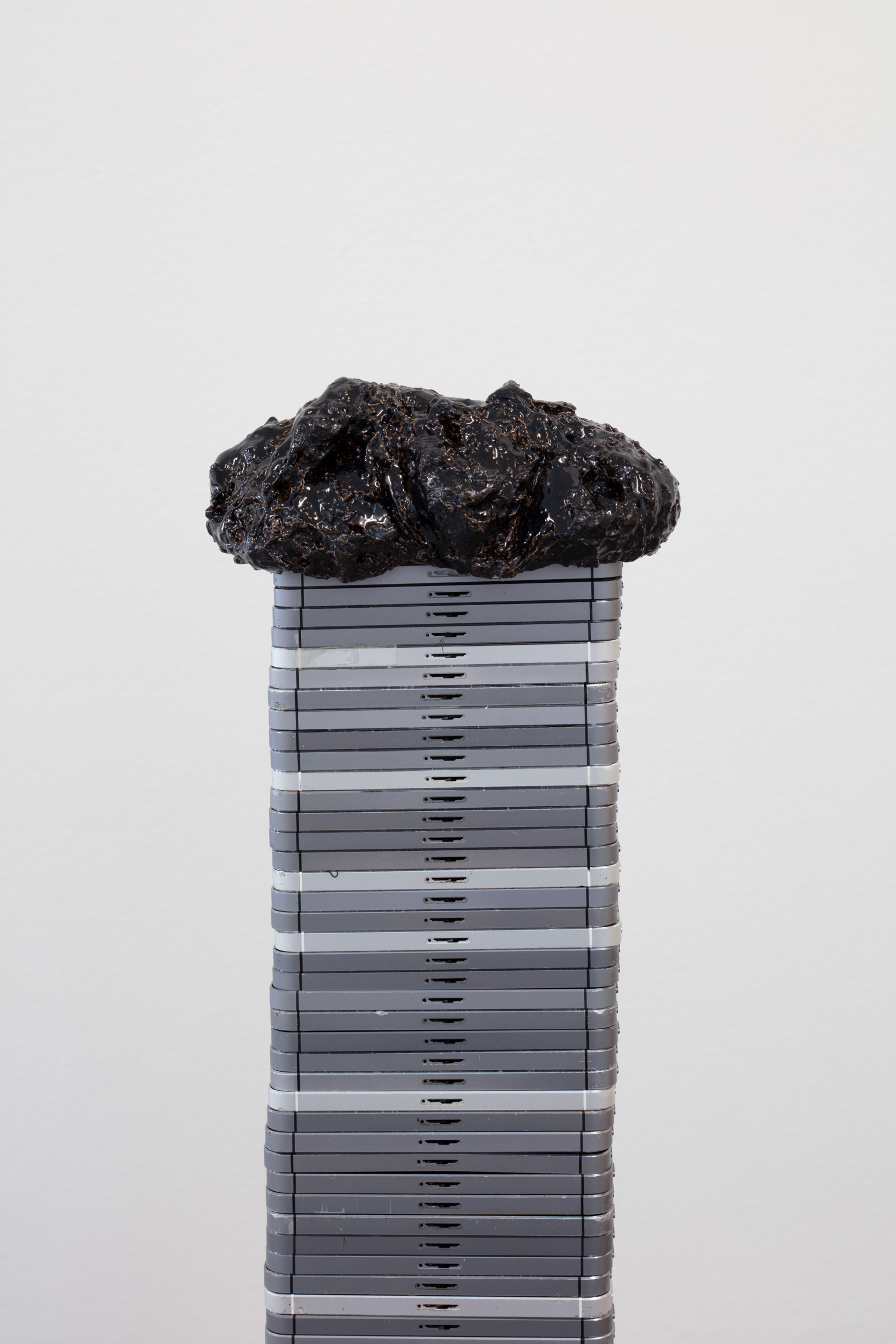
artwork left: American Artist / Untitled (Too Thick) II, 2021. Aluminum phone casings, silicone, polyurethane, asphalt, wood, lightning to USB cord. 152.4 x 17.8 x 10.2 cm (60 x 7 x 4inches). Photography by: Ramiro Chaves. Courtesy of American Artist and Labor.
American Artist in the studio. Photography by Martin Adolfsson for Collecteurs.

artwork: American Artist / Untitled (Too Thick) Gold, 2021. Aluminum phone casings, silicone, polyurethane, asphalt, wood, lightning to USB cord. 152.4 x 17.8 x 10.2 cm (60 x 7 x 4inches). Photography by: Ramiro Chaves. Courtesy of American Artist and Labor.
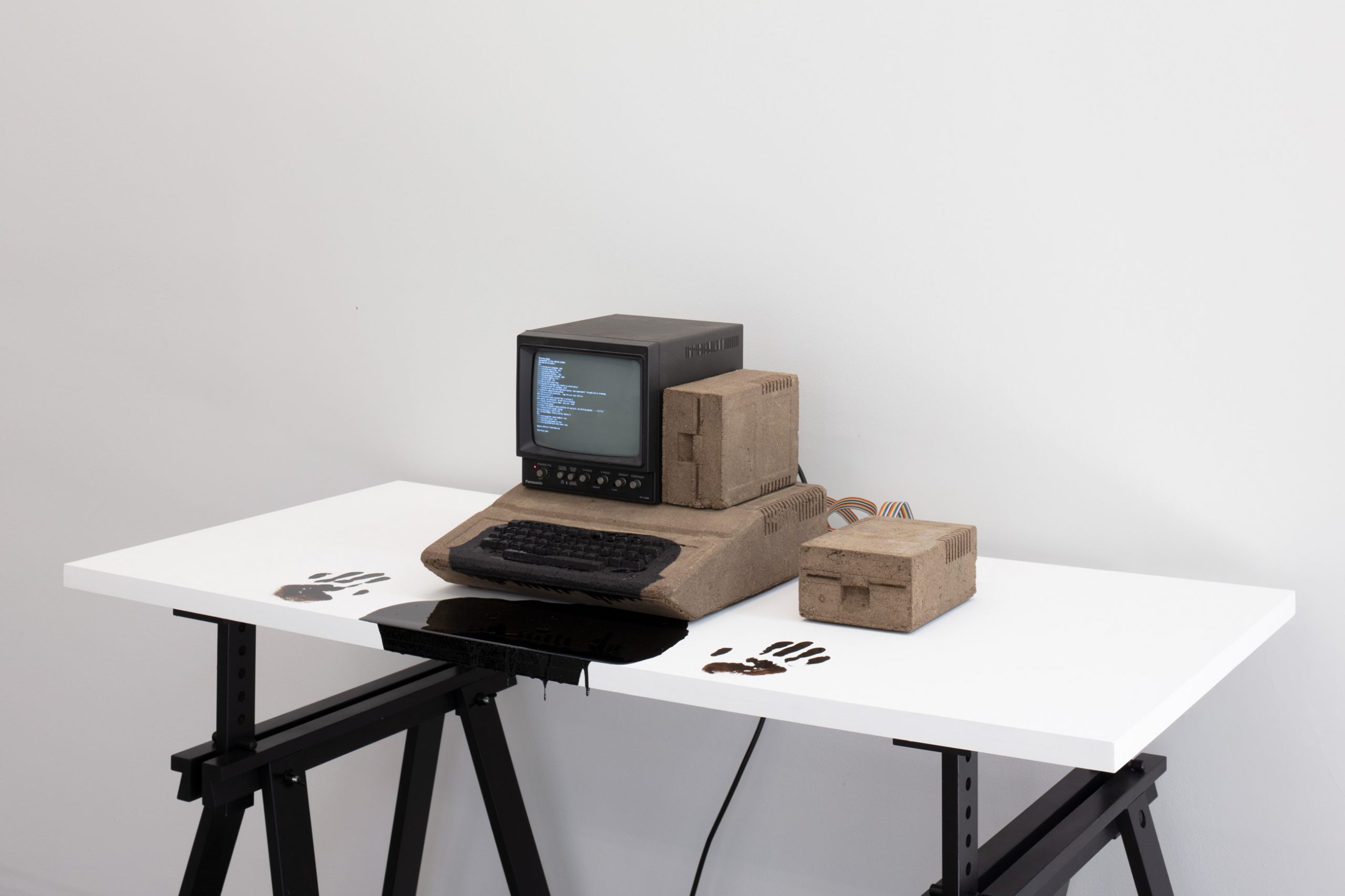
artwork: American Artist / Mother of All Demos II, 2021. Dirt, monochome CRT monitor, computer parts, Linux operating system, subwoofer cable, wood, asphalt. 149.9 x 74.9 x 127 cm. Photography by: Ramiro Chaves. Courtesy of American Artist and Labor.
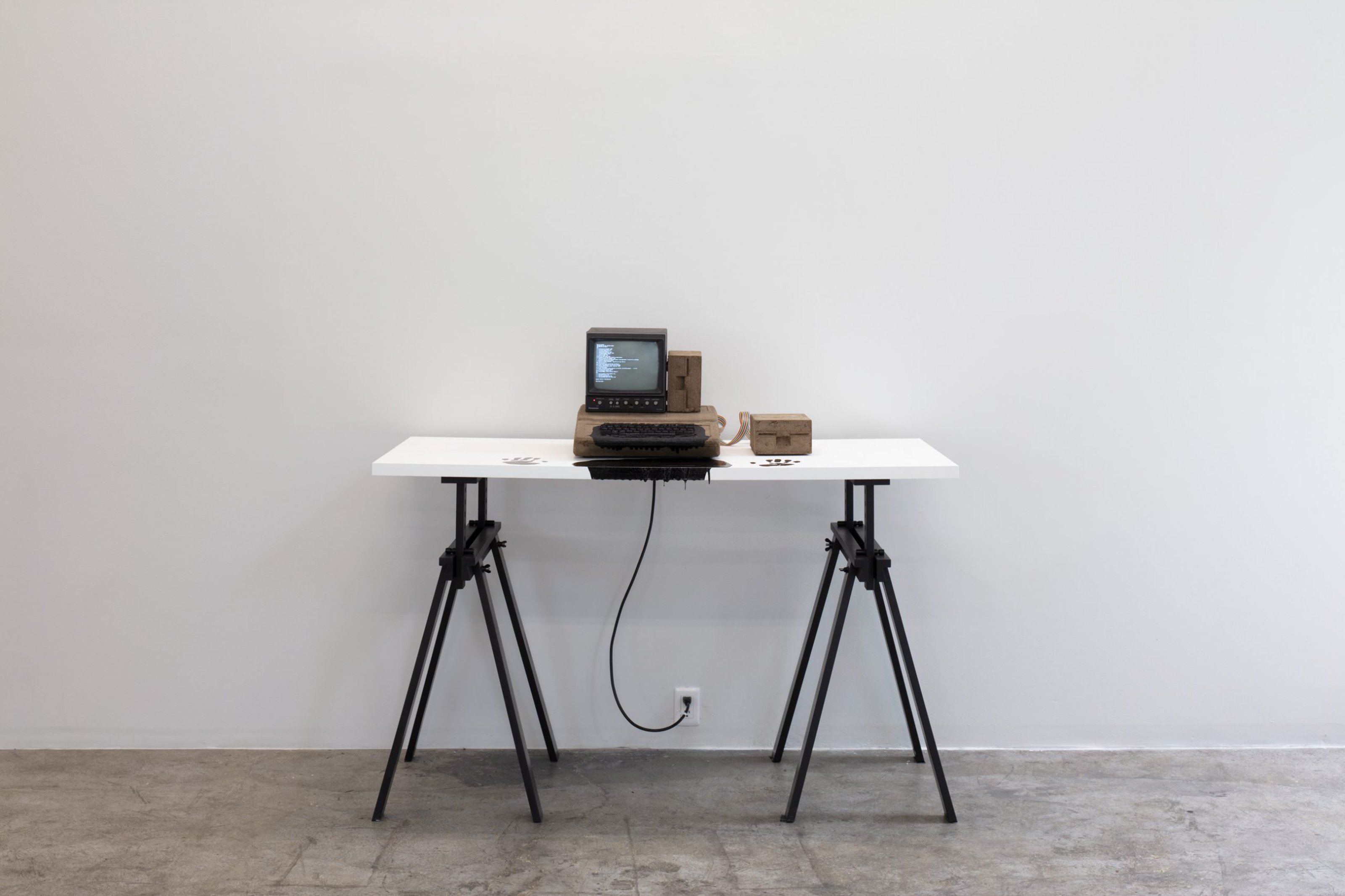
Excerpt from The Mother of All Demos, 1968.
American Artist in the studio. Photography by Martin Adolfsson for Collecteurs.
artwork: American Artist / Mother of All Demos II, 2021. Dirt, monochome CRT monitor, computer parts, Linux operating system, subwoofer cable, wood, asphalt. 149.9 x 74.9 x 127 cm. Photography by: Ramiro Chaves. Courtesy of American Artist and Labor.

artwork: American Artist / Untitled (Portal), 2018. Outdoor burner 20LB, propane tank, hose, skillet, Coca-Cola, smartphone, spatula. Variable dimensions. Photography by: Ramiro Chaves. Courtesy of American Artist and Labor.


The SmallTalk development and GUI environment from Xerox Alto. From ArsTechnica, “A History of GUI.”
artwork: American Artist / Untitled (Portal), 2018. Outdoor burner 20LB, propane tank, hose, skillet, Coca-Cola, smartphone, spatula. Variable dimensions. Photography by: Ramiro Chaves. Courtesy of American Artist and Labor.
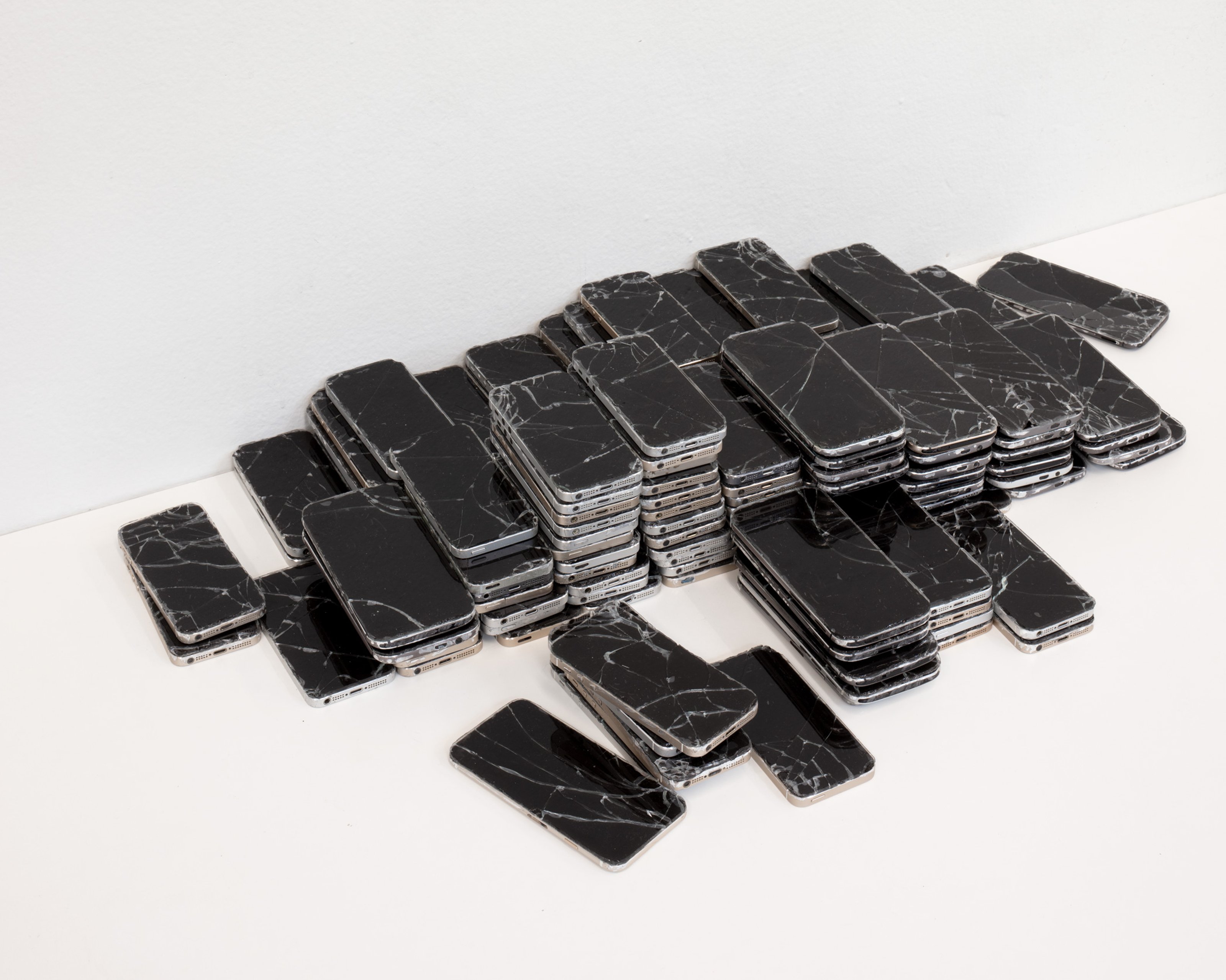
artwork: American Artist / No State, 2018. Aluminum phone casings, silicone, glass. Variable dimensions. Photography by: Ramiro Chaves. Courtesy of American Artist and Labor.
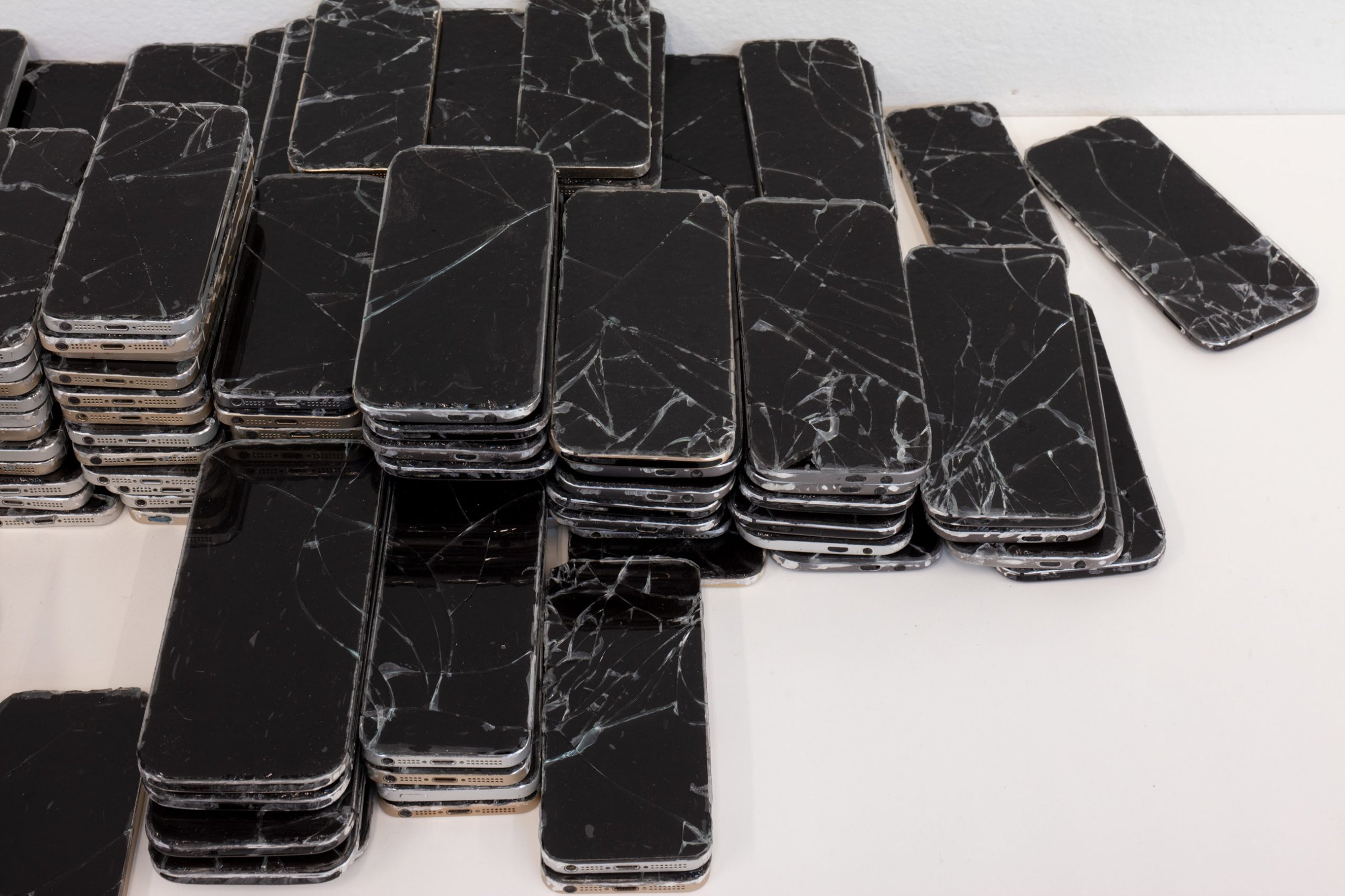
Apple Lisa commercial from 1983-84
artwork: American Artist / No State, 2018. Aluminum phone casings, silicone, glass. Variable dimensions. Photography by: Ramiro Chaves. Courtesy of American Artist and Labor.
Visit ‘Black Gooey Universe’ Exhibition at Labor on Collecteurs